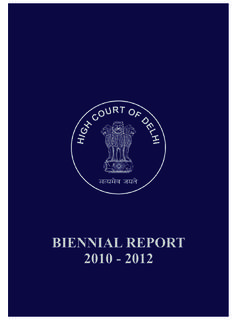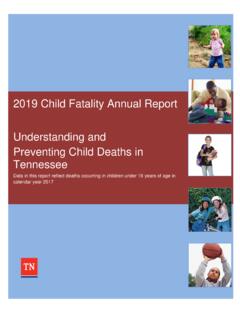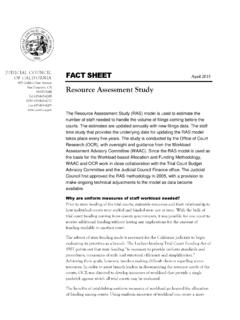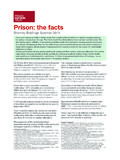Transcription of Website annexure to the 2013 Budget Review Structure of ...
1 W2. Website annexure to the 2013 Budget Review Structure of the government accounts Introduction South Africa's national government accounts are presented in annexure B of the 2013 Budget Review . The Structure of the reporting tables is based on recommendations in the most recent version of Government Finance Statistics1 (GFS), published in 2001, and the System of National Accounts2 (SNA), published in 1993. Certain modifications to the Structure of the accounts and the labelling of the receipt and payment items have been made to take into account specific features of the South African environment. The GFS presentation also differs in some respects from the presentation in Chapter 2 of the Budget Review , which is based on the SNA.
2 This annexure describes the presentation format and Structure of the government accounts, and explains deviations between GFS recommendations and the way government statistics in the national accounts are compiled and presented. It also describes the salient characteristics of the SNA's section on government statistics. Recording basis Both the SNA and the GFS recommend that items should be recorded on an accrual basis, which means that all government transactions should be included in the government accounts. This includes transactions that do not give rise to cash flows, such as changes in inventories, depreciation and accrued interest.
3 In accrual accounting, the time of recording should coincide with the underlying economic event. The entry does not necessarily coincide with the timing of the resultant cash flow, but rather with the change of ownership or when economic value is created, transformed or extinguished. For example, debt repayment 1. International Monetary Fund, 2001, Government Finance Statistics. Washington, IMF. 2. United Nations, 1993, System of National Accounts. Brussels, Luxembourg, New York, Paris, Washington, Inter- Secretariat Working Group on National Accounts. 1. 2013 Budget Review . should be recorded when the debt expires, whether or not this coincides with an actual repayment that gives rise to a cash flow.
4 The recommendation to use accrual accounting for government financial statements was first made in the 2001 GFS. Government intends to adopt this recommendation over time, but in the present, Budget data continues to be presented on a cash basis. This means that the transaction is recorded when the cash flow occurs and therefore does not match the timing of the underlying economic event. In some cases, modified cash principles are applied. This includes recording expenditure at the time of recording the transaction in the cash book (when the transaction is processed in the financial system and the payment is issued) and accruing interest on some types of government debt (zero-coupon bonds).
5 In strict cash accounting, the time of recording should coincide with the actual cash flow. In South Africa, entries for the national Budget data are made during the time period in which transactions are captured by financial systems. After the financial year-end, books remain open so that all year-end procedures can be finalised, such as reconciling actual bank account balances with revenue and expenditure reported, and correcting item classification. The year-end procedures do not influence revenue and expenditure levels, and consist primarily of: Late requests for funds by government departments to settle obligations relating to the specific financial year.
6 Surrenders of unspent funds by government departments (funds requested but not used). Corrections to revenue, expenditure or financing transactions that were, for example, erroneously classified. Adjustments to expenditure data, for auditing and parliamentary purposes, to show only authorised expenditure for the particular financial year (excluding all unauthorised spending). Economic reporting format The economic reporting format (ERF) was introduced in the 2004 Budget . The ERF is based on the GFS, as adapted for South Africa's reporting requirements. The Budget format is supported by a standard chart of accounts (SCOA), which is fully aligned with the ERF and provides for posting-level details of the Budget within the financial systems.
7 In the ERF and the chart, each descriptive label reflects the actual content of the item. Opaque labels such as other or miscellaneous are avoided to improve transparency. This practice ensures that classifications are consistent across all national and provincial departments, improving the quality of information provided to legislatures, assisting in the policy-making process and enhancing accountability. The evolution of accounting and reporting requirements, as well as the pending introduction of an integrated financial management system (IFMS), led to a Review of the SCOA in 2008. These changes have improved government's ability to report on infrastructure spending, provided for better control over departmental programme budgets, enabled the identification of more appropriate spending items in the chart, enhanced asset management through better recording of asset transactions, and enabled government to monitor regional spending.
8 To protect the integrity of the chart, the National Treasury helped departments meet the format requirements by developing a detailed training programme, and establishing a classification committee and call centre to support practitioners. Support initiatives aim to improve consistency in the application of the new classification rules and to recommend appropriate amendments to the SCOA and the financial system. The committee issues circulars that provide feedback to practitioners on changes made to the chart of accounts, ensuring a consistent approach to classification. 2. annexure W2: Structure OF THE GOVERNMENT ACCOUNTS.
9 Structure of accounts The reporting format organises all government transactions into three broad categories: receipts, payments and financing. The Budget balance (deficit or surplus) is calculated as receipts less payments, which is equal to total financing, but with the opposite sign. Receipts Government receipts are divided into taxes, sales, transfers, fines, penalties and forfeits, interest, dividends and rent on land, as well as transactions in financial assets and liabilities. Taxes are classified according to the type of activity on which they are levied, including income, profits, consumption of domestic goods and services, and international trade.
10 Sales are disaggregated into sales of capital assets and other sales. Transfers are unrequited receipts the party making the transfer does not receive anything of similar value directly in return. These are classified according to unit, for example, other government units, private enterprises and public corporations, households and so on. Fines, penalties and forfeits consist of all compulsory receipts imposed by a court or quasi-judicial body. Interest, dividends and rent on land includes all receipts associated with ownership of financial assets and land. Transactions in financial assets and liabilities covers three financial transactions.















